Mudras are an integral part of yoga, Meditation and chakra balancing, and at India Yoga School, we place a special emphasis on guiding our students to learn these mudras to perfection. There is meaning and purpose to each mudra, just as there is to other yoga practices.
Learn the meaning of mudras, how they relate to meditation and yoga, and which mudras are most effective for balancing chakras and general practice in this blog post.
What are the yoga mudras?
Mudras are yoga seals or gestures. These seals and motions, when practiced regularly, direct the prana, or life power, to specific areas. Mudras are numerous. Hand hasta mudras, body kaya mudras, and consciousness citta mudras are the three main types. It is usual for us to employ hand mudras.
Yoga of Life and Mudras
The five elements of fire, air, space, earth, and water are the building blocks of the human body, according to Ayurveda. A well-balanced body possesses all of these components. On the other hand, a dominant or weakening element would cause an imbalance that would be harmful to health. A disease or ailment would be the medical term for this.
Like the five fingers, there are five elements. A suitable element is symbolised by each finger. The prana (life force energy) for each element is said to flow through the fingers, according to yoga philosophy. We can direct more or less prana to a certain area of the body by adjusting the pranas. For that reason, a mudra might be thought of as a seal. There is a reason behind our act of locking or sealing the pranas.
Using prana in conjunction with a purpose-built mudra can help bring harmony back to the body’s five elements.
As a result, the fingers stand for each component:
- The thumb is a symbol of fire.
- The index finger denotes air
- The space element is symbolised by the middle finger.
- The element of earth is symbolised by the ring finger.
- The water element is symbolised by the pinky finger.
The Five Prana
- Apana is the amount of power needed to expel waste products (sweat, urine, etc.).
- The processes of digestion and metabolism rely on samana.
- The power that the heart needs to beat is called prana.
- The force necessary for movement and circulation is vyana.
- Actions involving the upper body, such as speaking, thinking, moving the eyes, etc., necessitate udana.
Read: Complete Guide to the 3 Gunas of Nature: Sattva, Rajas & Tamas
Meditation and Yoga with Five Mudras
When practiced properly, mudras can unite and balance the body via the power of the hands.
The right side of the body is associated with solar energy and the left is associated with lunar energy, much as our hands and bodies are bipartite. One example is the Gyana Mudra, which links the Pingala Nadi, the energy of the sun, to the Ida Nadi, the energy of the moon, on the other side. Mudras can also be used to specifically activate the energy of the sun or the moon.
In addition to regulating energy flow throughout the body, mudras are a common tool for bringing one’s attention inward during yoga and meditation.
Mudras are a variety of yoga and meditation hand positions, each with its own specific function and set of advantages for the whole person. Namaskar Mudra, Chin Mudra, Gyana Mudra, and Vayu Mudra are among the most common hand gestures used in yoga and meditation.
Essential Mudras for Yoga and Meditation.
Namaskar Mudra
As a prayer, we bring our palms and fingers together in front of our hearts in this mudra. This mudra brings harmony to the body’s two halves by connecting the elements. Our frequent usage of it in meditation is due to the calming and compassionate feelings it evokes.
Chin Mudra
While meditating, this is a mudra that many people use. This mudra bestows wisdom. It entails bringing together the index and thumb fingers as the hands rest on the knees, palms upward. To visualise the light pressure that should be exerted between the fingers in this mudra, picture a sheet of paper held in that position.
Using this potent mudra in pranayama and meditation will help you focus more intently and become more attuned to your inner self. During the day, we align our fingers and palms in this mudra so that they absorb the energy of the sun.
Jnana Mudra
In this hand position, your fingers should point downward, similar to Chin Mudra. We harness the sun’s vitality by doing Chin Mudra when it rises. To retain the energy we acquired from the sun throughout the day, we perform Gyana Mudra with hands facing downwards as the sun goes down. In the same way that chin mudra aids in concentration and self-awareness, this mudra does the same.
This mudra is a concentration aid that involves combining the fire and air elements of the thumb and index fingers to extinguish air and reduce vata (air) energy. Further explanation: mental disturbances occur when the air element is present in excess. Mental disorders can be reduced by using the fire element to lower the air element.
Vayu Mudra
When you tuck your index finger into the base of your thumb and cross your thumb over the index finger, you will make this mudra.
Do not mistake this mudra for the Chin mudra. Their effects and hand placement are comparable; however, Vayu Mudra is employed to significantly diminish the Vayu air element. Apply this mudra when you feel that the air element is taking over your body. This could be due to conditions like excessive stress or worry, skin diseases, or an overabundance of air in your intestines.
Read: Bhramari Pranayama Benefits
Dhyana Mudra
The name for this position is the “concentration mudra.” Raise your right hand above your left in the Dhyana Mudra position. Place your right palm on top of your left. Gather your fingers together and touch your thumbs together. The thumbs link the fire element while the others are at rest.
The mind is calmed and the intellect is engaged in this mudra. Many famous images and sculptures of Lord Buddha are depicted in the Dhyana Mudra, a well-known hand mudra for meditation.
Essential Mudras for Chakra Balancing
To keep the intricate chakra system in harmony, mudras are an indispensable tool. Each part of the body has its own energy centre, or chakra. One of the seven chakras that run along the spine regulates every aspect of our physical, mental, emotional, and spiritual selves.
Consequently, anomalies in the body, mind, and spirit can result from disruptions in the chakra system. Chakra mudras are a way to practice energy manipulation that can help you feel better by bringing harmony back to your energy system.
Earlier, we established that each finger stands for a different element.
The first five chakras work in a similar fashion:
- Muladhra Chakra is associated with the earth element.
- Svadhishthana Chakra is associated with water.
- Manipura Chakra is associated with fire.
- Anahata Chakra is associated with air.
- Visuddha Chakra is associated with space.
- Sahasrara Chakra is associated with the mind and intelligence.
- Ajna Chakra is associated with light.
When we do the corresponding mudra, we bring harmony to the body’s energy centres, or chakras. To help with chakra alignment, activation, and healing, below are seven mudras:
Mudra for the Muladhara Chakra
A common mudra in yoga and chakra meditation, Prithvi means “earth” in Sanskrit. Its purpose is to bring harmony to the root chakra and activate the earth element. This root chakra mudra, which is anchoring, fosters stability and inner strength. In Ayurveda, Prithvi Mudra is employed for the elimination of toxins and the treatment of gastrointestinal problems.
Forming this mudra for the root chakra is as easy as touching your fingertips together. Let your thumb and ring finger meet in the centre of your palm as your palms face upwards.
Mudra for the Svadhishthana Chakra
As a common hand gesture in pranayama and meditation, the Varun Mudra helps bring harmony to the Sacral Chakra by increasing the body’s water content. Your body will not be able to perform its functions correctly if it is dehydrated. The Varun Mudra restores harmony by flushing out toxins and replenishing the body, leading to clearer skin and more robust joints. It alleviates symptoms brought on by a sacral chakra blockage and serves as a mudra for that chakra.
You need to relax your thoughts and open your palms to do the Sacral Chakra Mudra. Next, bring your little finger and thumb together. You should do your best to maintain your remaining fingers straight without putting undue effort on your hand, even though they will curl in naturally.
Mudra for the Manipura Chakra
The Agni Mudra is a physical manifestation of the fire element, which is associated with heat. This Solar Plexus Mudra, when practiced as a yoga or meditation asana, helps digestion and lights a fire within by stimulating the ‘agni,’ or digestive fire. Your life will become clearer and your self-esteem will soar when your conscious mind is fully alert.
In order to invoke the Manipura or Solar Plexus Chakra through the Agni Mudra, tuck your ring finger into your palm and delicately place your thumb’s base over your ring finger.
Mudra for the Anahata Chakra
The Vayu Mudra, which means “wind” or “air” in Sanskrit, is an effective hand posture for re-centering the heart chakra and bringing harmony to the body’s air element. If you suffer from anxiety or indecision, try performing the Vayu Mudra. It will help you feel more confident and calm. Physically, this potent Heart Chakra Mudra helps alleviate knee pain, sciatica, Parkinson’s disease, and other ailments by opening up obstructed airways. The Heart Chakra Mudra is performed by crossing the thumb over the index finger. Make sure all your fingers are extended before letting your thumb rest lightly here.
Mudra for the Visuddha Chakra
The Akash Mudra, sometimes called the Shuni Mudra, is a common Ayurvedic hand gesture for opening the throat chakra and creating more space in the energy system. By consistently performing this Throat Chakra Mudra, you can enhance your calcium intake and alleviate symptoms like jaw lock and hypertension. Throat chakra mudras can improve both intuition and awareness.
Making the Akash Mudra is as easy as bringing the tips of your middle finger and thumb together while simultaneously straightening the remaining fingers.
Read: The Role of Yoga in Improving Memory
Mudra for the Ajna Chakra
One sacred hand motion linked with heavenly energy is the Hakini Mudra. The purpose of this mudra, which is also known as the “mudra of the mind,” is to open the Third Eye (Ajna Chakra) and direct prana energy into it. This Third Eye Mudra will help you concentrate better and be more creative if you have trouble focusing or if you tend to overanalyze things.
Lightly touch your midsection with your interlaced fingers and thumbs to do the Hakini Mudra. Put a sphere of light between your palms and picture it. Keep your hands in this position or bring them up to your third eye chakra, located in the middle of your forehead, to perform the mudra.
Mudra for the Sahasrara Chakra
Above, we established that the Dhyana Mudra is a concentration mudra that aids in entering a more profound meditative state. Its other uses include fostering tranquilly within and opening the Crown Chakra.
Place your right hand on top of your left, palms facing up, to create this Crown Chakra Mudra. Next, bring the tips of your thumbs together in the centre by slightly raising them.
Conclusion
Mudras are potent techniques that can enhance your health and well-being, balance your internal energy, and sharpen your concentration. You can take your regular yoga and meditation practice to the next level by adding these hand movements to your yoga practice with the help of a professional yoga guide at India Yoga School.
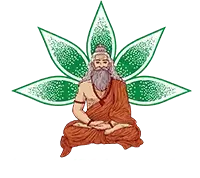
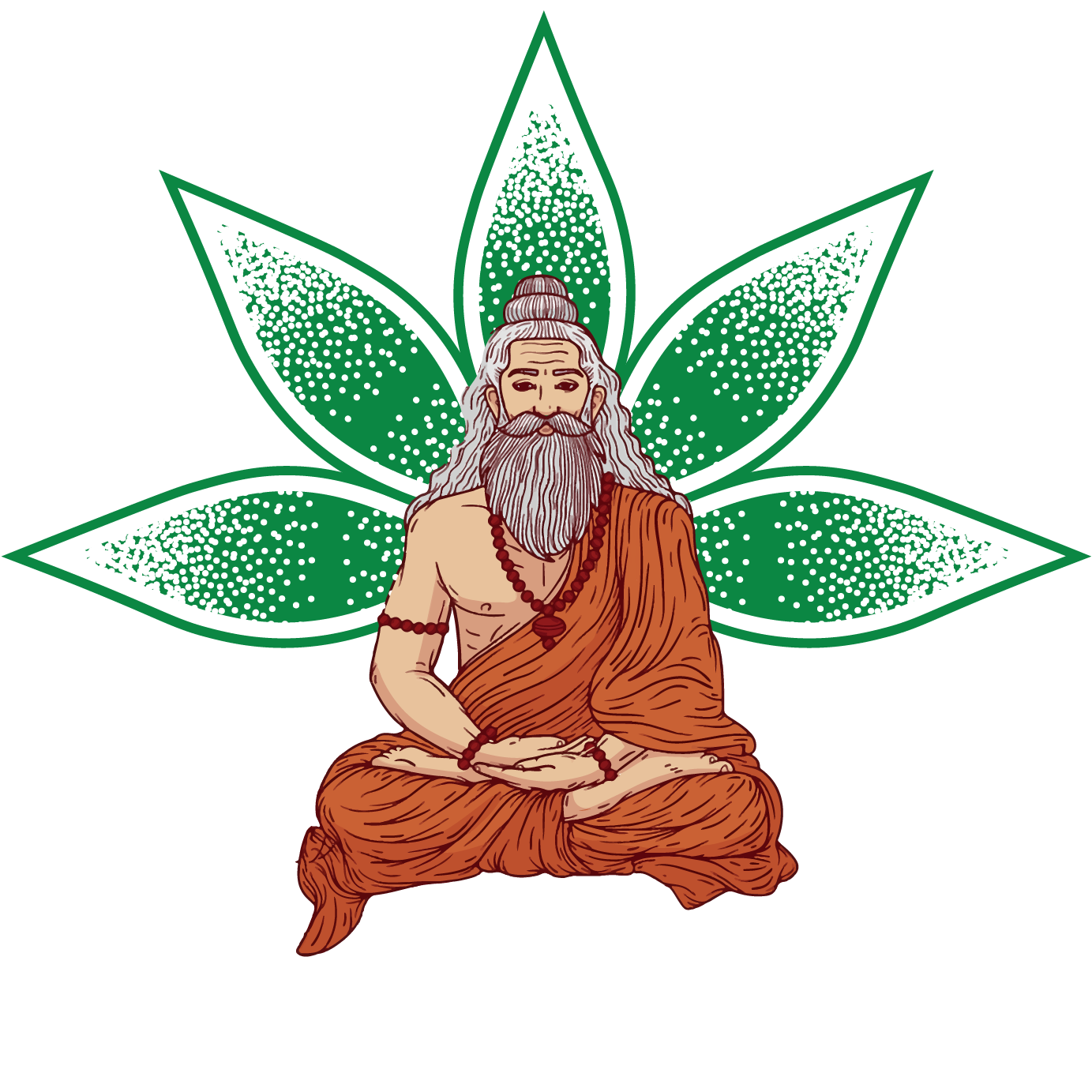
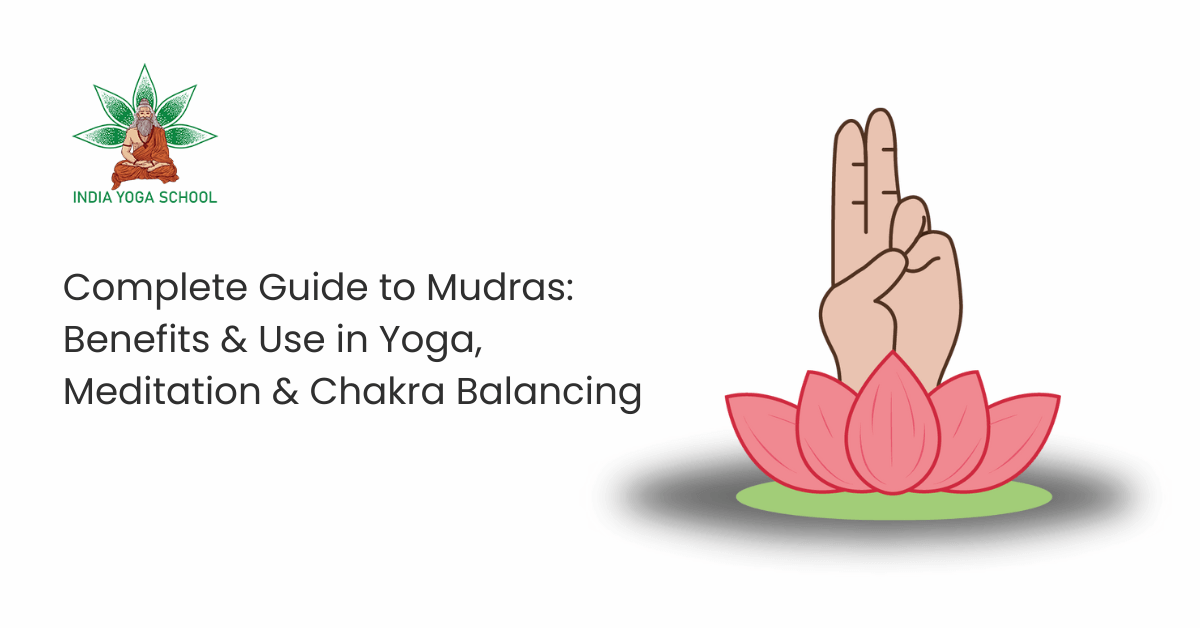
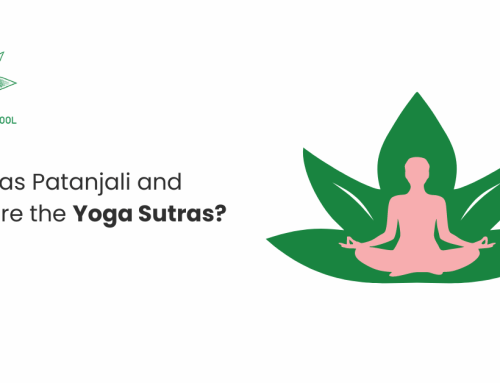
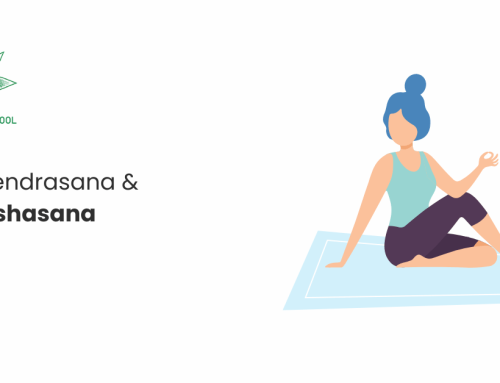
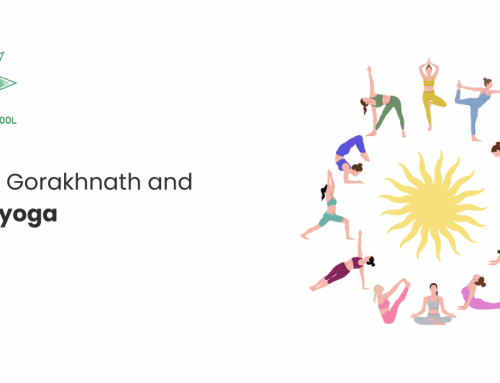
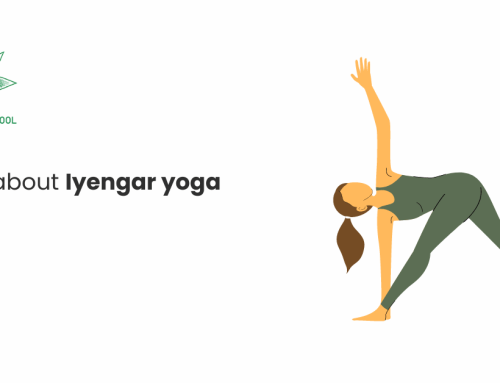
Leave A Comment